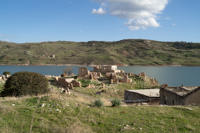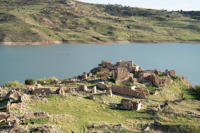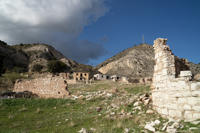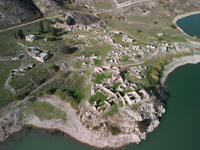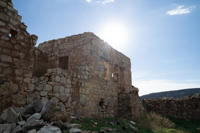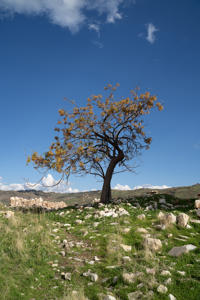Foinikas Village
When people think of Cyprus, they usually envision the beautiful beaches, vibrant nightlife, and rich culture. However, there is more to this island nation than just those things. For those interested in history and off-the-beaten-path destinations, the village of Foinikas is a must-see. Located in the Paphos district, this village may not be as well-known as other tourist spots in Cyprus, but it offers visitors a glimpse of another era.
Foinikas was once a bustling administration center for the Naites, an ancient people who conquered Cyprus in the 12th century. It was strategically located near the west bank of the Xeropotamos River, about 5 kilometers northwest of the village of Anarita in Paphos. The village was chosen by the Naites as the capital of their administration because of its impregnable fortress position. The only access to it was through the river bank, which made it difficult for enemies to attack. This decision was taken after the famous raid of Cyprus by Richard the Lionheart in 1191 AD. The Naites used Foinikas as a base to conquer the Limassol and Paphos districts.
The name of the village comes from the tree “finikia”, which is found throughout the area. In older maps, the village was written as “Finicha”. This name is connected with the historical view that it existed during the Byzantine period. However, there are no monuments from that particular historical period.
Foinikas, along with the villages of Agia Irene, Anogyra, Platanisso, and Kaloyiannakia, constituted the “Commendaria della Finicha”. This was the highest military administration in the area, and it played a significant role in the island's history. However, over time, the village was abandoned and left to nature's whims. Today, visitors can see the signs of time in the decomposed houses and the overgrown vegetation.
Despite its current state, the view from afar next to the Asprokremmos Dam is still magnificent. The ruins of the houses that have begun to break down have become one with nature, and the view of the wild mountainous location, combined with the water location of the Asprokremmos Dam, creates an emotional feeling.
Getting to Foinikas Village is not easy. Visitors must follow a northwest course from Anarita or a south course from the village of Nata along the length of the Xeropotamos River. They will eventually arrive at the village after passing the Asrokremmos Dam. The dirt roads are in bad shape, so it's best to use an SUV car for transportation.
Foinikas Village had a population increase from 1881 to 1973, with the number of residents increasing nearly four times its original size. Unfortunately, during the Turkish occupation, Turkish Cypriot residents were forced to abandon their village and move to the occupied part of Cyprus. The form of the village today does not remind us of its past beauty. Visitors come face to face with thick wild vegetation and the ruins of the houses that were abandoned by the residents and worn out with time. But for those who appreciate history and the beauty of nature, Foinikas Village is a hidden gem that is worth exploring.
In conclusion, Foinikas Village in Paphos, Cyprus, may not be on the top of every tourist's list, but it offers a unique glimpse into the island's past. Visitors can witness the ruins of an ancient civilization, combined with the beauty of nature, which creates a memorable experience. It's a reminder that there is
General Information
Ratings
Spectacular
8
Fantastic
7
Enjoyable
0
Average
0
Terrible
0
4.5

